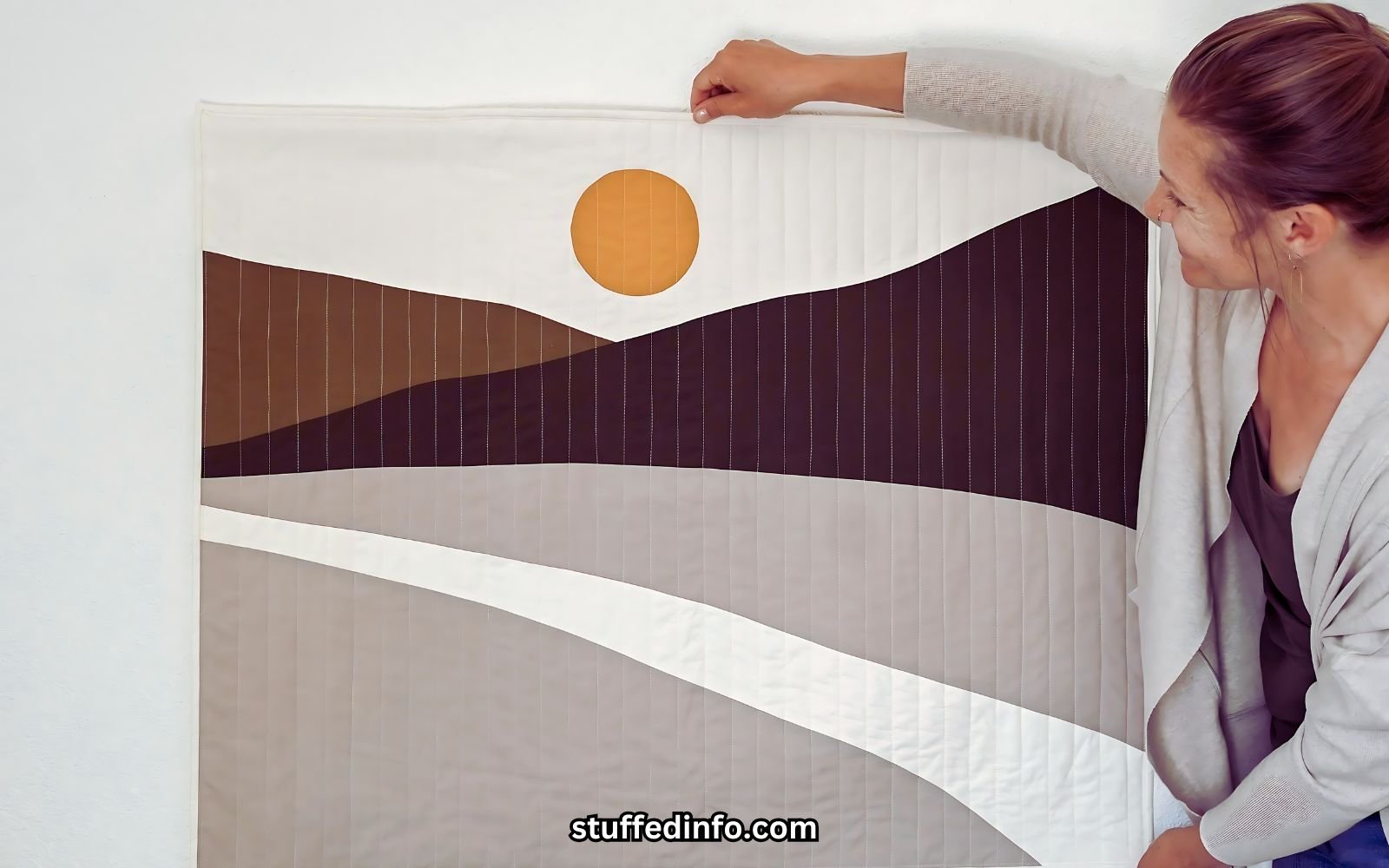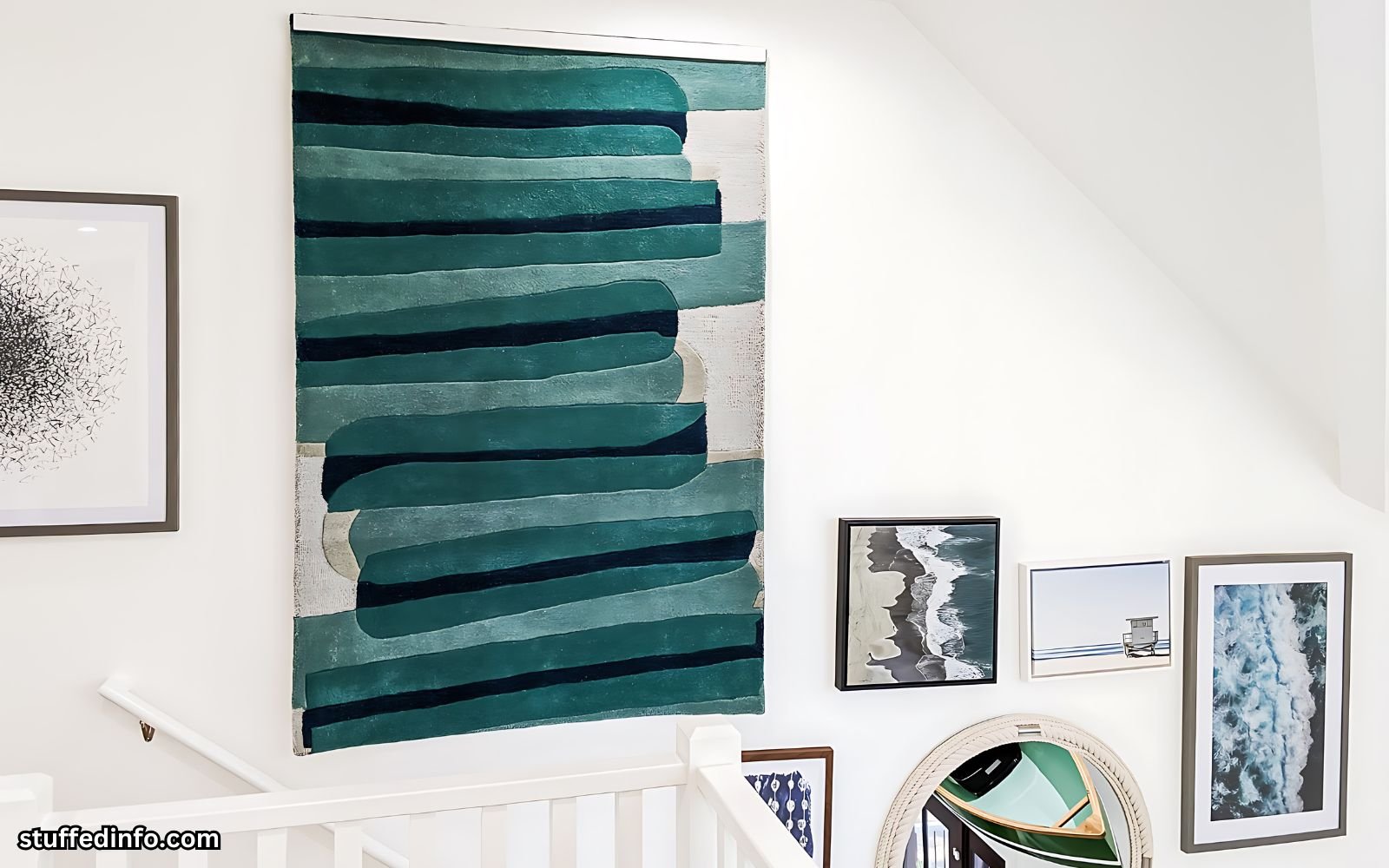Hanging a quilt on the wall can transform it into a stunning exhibition of craftsmanship, color and culture. Thus, quilts bring comfort and originality to the room. However, a lot of people are stuck when it comes to taking care of it and question how to hang a quilt on the wall. Hence, there are several hanging options available, so you may select the one that best fits the dimensions, weight and design of your quilt. Therefore, here’s a guide describing each and every aspect of this matter.
Table of Contents
ToggleConsideration Before Hanging
Before learning how to hang a quilt on the wall, let’s first understand its significance. Thus, some of the points to keep in mind before hanging a quilt to the wall are as follows:
- Consider the quilt’s dimensions, weight, material, and display setting before hanging it on the wall.
- Delicate quilts need softer techniques to protect fibers, while larger quilts need more support to prevent sagging or damage.
- Selecting a hanging technique like quilt clips or a rod and sleeve ensures even support for the quilt on the wall.
- Furthermore, choose the placement area carefully, as harsh temperatures, high humidity, or direct sunlight can damage the fabric and cause fading.
- Positioning the quilt in a space with minimal sun exposure can help maintain its color and quality.
- In order to ensure even wear over time, it’s also helpful to dust the quilt frequently and rotate it occasionally.

Note: You may appreciate the quilt’s beauty and prolong longevity by taking these factors into account.
How To Hang A Quilt On The Wall?
Now that you’ve learned the key aspects, it’s time to find out how to hang a quilt on the wall. Therefore, read the brief about each one of them in the below shared sections.
Sleeve and Rod Method
The sleeve and rod technique is one of the most popular answers to how to hang a quilt on the wall. Thus, you must stitch a fabric sleeve onto the quilt’s back through which you will insert a rod. Therefore, this technique reduces stress on the fabric and distributes the weight evenly. Hence, you must select a rod that is sturdy and robust to handle the weight of the quilt without bending. Therefore, the steps to use a sleeve and rod are as follows:
Sew the Sleeve: Cut a piece of cloth into a strip that is typically 4 inches wide, the same width as the quilt. After this, sew down the long edge after folding it lengthwise with right sides facing each other. Once done, press the sleeve flat after turning the right side out. Finally, with the top and bottom of the quilt left open, hand-sew the sleeve along the upper edge.
Insert the Rod: In the next step, you have to make sure that the rod is sturdy enough to hold the weight of the quilt and slightly longer than the sleeve width. Furthermore, place the rod into the sleeve.
Hang on the wall: At last, the rod should be fastened to the wall using hooks, nails or a mounting bracket. Thus, it protects the quilt from sagging and keeps it flat.

Quilt Hanger Clips
The other answer to how to hang a large quilt on the wall is by using the quilt hanger clips. Thus, there are various clip holders of different lengths and you must choose one that suits the size of your quilt. You can easily hang the hanger on a wall hook if its top is shaped like a ring. Hence, the steps for hanging quilt using the hanger clips are as follows:
Select a Hanger: First of all, choose quilt hangers or clips that complement the weight and design of the quilt.
Attach the Quilt: Once done, fasten the quilt on the clip or hanger. For more delicate quilts, use a certain type of quilt clips that firmly hold the fabric without causing any damage.
Attach the Hanger on the Wall: Finally, attach the hanger to the wall using screws, nails, or adhesive hooks (depending on the weight) and you are done.
Quilt Ladder
The last but not least method to hang a quilt on the wall is by using the quilt ladder. Thus, manufacturers usually make quilt ladders out of wood, and they rest against a wall. Furthermore, they include several rungs that allow you to layer quilts and create a neat and eye- catching display. Moreover, you can place them in living rooms, bedrooms, or bathrooms, and they take up little floor space. Quilt ladders add warmth and texture to the room’s decor while making it easy to replace or rearrange your quilts. So, the steps to use a quilt ladder are as follows:
Select a Ladder Size: So, depending on the number of quilts you want to hang, choose a ladder that fits your room in terms of both height and width.
Place the Ladder: After this, make sure the ladder’s feet are steady on the ground by leaning it firmly against a wall.
Layer Quilts: Finally, to balance the display, drape thicker or larger blankets at the bottom and smaller ones over the rungs.
Advantages and Disadvantages of Hanging a Quilt
Now when you know all about the different methods and answers to how to hang a quilt on the wall, it’s high time to know the goods and bads of it. Therefore, have a look at that in the below shared sections:
Advantages
Some of the benefits of hanging a quilt on the wall are as follows:
- Attractive: Hanging quilts are a display of craftsmanship and add warmth, color, and texture to the walls. Therefore, it gives an aesthetic look to the room making it a focal point in the room.
- Easy Rotation: Quilts can be removed easily that allows the user to redecorate the room or clean the quilt seasonally.
- Protection and Preservation: Hanging quilts properly helps in avoiding accidental damage in high-traffic areas. It also helps in keeping pets away.
- Preserve and Honor Family Heirloom: Displaying heirloom quilts can preserve family history and keep memories visible in your daily life.
Disadvantages
On the other hand, some of the drawbacks or shortcomings of hanging a quilt on the wall include:
- Potential for Fading and Wear: Prolonged exposure to heat can cause fading. Additionally, if you do not take it down periodically, it may cause uneven wear in certain parts of the quilt.
- Limitations for Large or Heavy Quilts: Large or heavy quilts need a robust system that can be complex and costly. Furthermore, if you do not properly anchor it, it can pull away from the wall over time.
- Cleaning and Maintenance: Hanging Quilts accumulate dust and may require periodic cleaning, which can be delicate work for certain fabrics or older quilts.
- Temperature and Humidity Sensitivity: Quilts can be sensitive to fluctuations in temperature and humidity, which can cause fibers to expand and contract, leading to long-term damage if not controlled.

Conclusion
In this blogpost, we briefly answered the most asked question, which is how to hang a quilt on the wall. Using the appropriate hanging technique, such as quilt clips or a sleeve and rod, guarantees that you hold the quilt without causing any harm to the fabric. Moreover, depending on the size, weight, and style of the quilt, each approach has unique advantages, allowing one to choose a display option that complements the quilt and the interior design of the space.
FAQs
What is the best method for hanging a quilt on the wall?
The weight and dimensions of the quilt determine the best technique. Quilt clips, or a sleeve and rod are among the available options. Select a technique that supports the cloth without putting it under unnecessary stress because each one distributes weight differently.
How often should I clean or dust a quilt on display?
Frequently dust blankets using a soft cloth or a handheld vacuum with low suction. Avoid washing or ironing ancient quilts.
What size rod should I use to hang a quilt?
The rod must be robust enough to sustain the weight of the quilt without bending and just slightly longer than its breadth.







